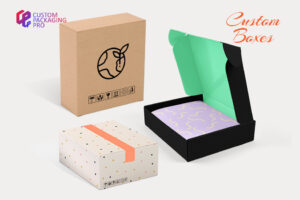Laser marking is a non-contact, permanent marking method that uses a focused beam of light (laser) to alter the surface of a material for identification, traceability, branding, and compliance purposes. It’s widely used across industries like automotive, aerospace, medical devices, electronics, and jewelry due to its precision, speed, and versatility.
Why Is Laser Marking Important?
✔ High Durability: Markings are resistant to wear, heat, and chemicals
✔ No Consumables: Unlike inkjet or labels, there’s no need for refills or stickers
✔ Precision: Delivers micron-level detail
✔ Eco-Friendly: No toxic waste, fumes, or inks involved
✔ Automation Ready: Easily integrated into smart manufacturing environments
Core Types of Laser Marking Technologies
| Laser Type | Wavelength | Ideal For | Common Materials |
|---|---|---|---|
| Fiber Laser | 1064 nm | High-speed marking & metal work | Steel, aluminum, copper |
| CO₂ Laser | 10.6 µm | Non-metal marking & engraving | Wood, leather, glass, plastics |
| UV Laser | 355 nm | High-precision & sensitive items | Plastics, silicon, glass |
| Green Laser | 532 nm | Reflective materials | PCB, gold, silver |
Laser Marking Applications by Industry
📦 Manufacturing & Industrial
-
Part traceability
-
Barcodes and QR codes
-
Serial number marking
💎 Jewelry & Luxury Goods
-
Fine engraving on metals
-
Branding high-value items
🔬 Medical Devices
-
UDI (Unique Device Identification) compliance
-
Sterilization-resistant marking
📱 Electronics
-
Circuit board labeling
-
Micro-marking for traceability
🏭 Automotive & Aerospace
-
VIN numbers
-
Component ID codes
-
High-temperature resistant markings
Laser Marking vs. Other Methods
| Feature | Laser Marking | Inkjet Printing | Dot Peen Marking |
|---|---|---|---|
| Permanence | ✅ High | ❌ Low | ✅ Medium |
| Contactless | ✅ Yes | ✅ Yes | ❌ No |
| Maintenance | ✅ Low | ❌ Medium | ❌ High |
| Surface Damage | ❌ Minimal | ✅ None | ✅ Possible |
| Consumables Required | ❌ None | ✅ Ink | ❌ None |
How Does Laser Marking Work?
-
Laser Source Generation
Produces a high-powered beam suitable for the target material. -
Beam Delivery
Directs the laser via galvanometers or scanning heads to precise coordinates. -
Material Interaction
Alters the material via one of the following methods:-
Annealing (oxidizes metal surface, no material removed)
-
Etching (removes surface material)
-
Foaming (creates a raised mark on plastics)
-
Color Change (used in polymers)
-
Materials Suitable for Laser Marking
✅ Metals: Stainless steel, aluminum, brass, copper
✅ Plastics: ABS, polycarbonate, polypropylene
✅ Ceramics and Glass
✅ Leather and Wood
✅ Semiconductors
Advantages of Using Laser Marking in Modern Production
-
Speed: High throughput, even at microscopic scale
-
Consistency: Every mark is identical in quality
-
Low Operational Cost: Minimal maintenance
-
Data-rich Marking: 2D Data Matrix and QR codes
-
Brand Integrity: Adds professionalism and traceability
Frequently Asked Questions (FAQs)
❓ What is the difference between laser engraving and laser marking?
Laser marking changes the material surface (discoloration, oxidation), while laser engraving removes part of the material to create a deeper mark. Marking is typically non-invasive and better for data-rich, high-speed applications.
❓ Can laser marking be used on all plastics?
Not all plastics respond the same. Polycarbonate and ABS are ideal due to their carbon content, while additives or coatings may be required for others.
❓ Is laser marking safe?
Yes, when operated under proper safety standards (Class 1 enclosures, goggles), laser marking is safe and used in cleanrooms, production floors, and laboratories.
❓ What industries require UDI laser marking?
The medical device industry, under regulatory bodies like the FDA and MDR, mandates UDI laser marking for traceability and patient safety.
❓ How long do laser markers last?
Laser systems have a typical lifespan of 100,000 hours (MTBF). Fiber lasers, in particular, offer long life and stable performance with minimal downtime.
Pro Tips for Choosing a Laser Marking Machine
🛠 Know Your Material: Different lasers perform better on metals vs. plastics
🛠 Evaluate Marking Speed vs. Detail: High-speed fiber lasers may reduce fine detail
🛠 Software Matters: Look for intuitive CAD-based design and control software
🛠 Cooling System: Air vs. water cooling can affect performance and maintenance
🛠 After-Sales Support: Choose brands with certified local or international service
Interactive Checklist: Is Laser Marking Right for Your Business?
-
⬜ Do you need permanent, tamper-proof marks?
-
⬜ Are you marking high-value components?
-
⬜ Do you work with metal, plastic, or glass?
-
⬜ Is automation or inline integration needed?
-
⬜ Do you want eco-friendly, low-maintenance systems?
If you answered yes to at least 3, laser marking is likely a strong fit.
Top Features to Look for in a Laser Marking System
🔍 Auto-focus capabilities
🔍 Rotary axis for cylindrical parts
🔍 3D surface marking
🔍 Adjustable pulse width (MOPA lasers)
🔍 Real-time verification (vision systems)
Real-World Example: Fiber Laser Marking on Automotive Parts
An automotive OEM needed to mark thousands of engine parts with VIN codes and batch numbers per hour. Transitioning from inkjet to fiber laser resulted in:
-
78% reduction in consumables
-
40% faster cycle times
-
Zero mark degradation under heat and oil exposure
-







